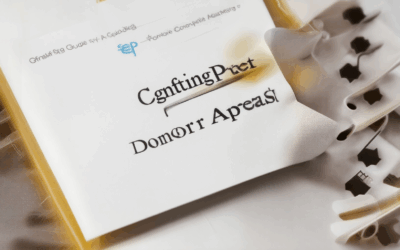Engaging donors effectively is crucial for the sustained growth and success of any organization, yet crafting impactful donor outreach strategies can be challenging. Whether you’re working with a nonprofit, community-based group, or business, understanding the nuances of donor outreach is essential to building lasting relationships and driving fundraising success. In this article, we’ll delve into proven strategies, frameworks, and best practices that will equip you with the tools needed to master donor outreach. From the Rule of 7 in fundraising to the 3 Cs of fundraising, the 5 Ps of fundraising, and beyond, we’ll explore actionable approaches that align with your organizational goals. By leveraging these insights, you’ll learn how to create meaningful connections, streamline your outreach efforts, and maximize your fundraising impact. Whether you’re looking to refine your existing strategies or develop a new approach, this guide offers practical advice and real-world examples to help you achieve success in donor outreach.
Charitable Outreach: A Comprehensive Overview
Charitable outreach is a strategic initiative undertaken by nonprofit organizations (NPOs) to connect with individuals and communities in need, providing essential support and resources. This approach addresses systemic issues such as poverty, lack of education, and healthcare disparities by mobilizing resources and volunteers. Beyond mere aid distribution, it fosters community engagement and trust, laying the foundation for sustainable impact.
Types of Programs:
1. Door-to-Door Campaigns: Directly reaching out to neighborhoods through mobile units to distribute goods and services, such as food drives and health screenings.
2. Community Events: Hosting gatherings like workshops and fairs to provide information, skills training, and entertainment, often focused on underserved areas.
3. Digital Outreach: Utilizing online platforms and social media, especially during emergencies, to reach remote individuals with critical information and assistance.
4. Partnerships: Collaborating with local institutions like schools and mosques to identify community needs and deliver targeted solutions.
5. Volunteer Initiatives: Organizing groups to assist with tasks such as meal preparation and home repairs, tailored to specific demographic needs.
Key Components:
– Empathy and Innovation: Tailoring approaches to cultural sensitivity and inclusivity, ensuring adaptability across diverse contexts.
– Technology Integration: Leveraging digital tools to enhance outreach efficiency and reach.
Benefits:
– Builds community trust and engagement.
– Provides immediate relief and long-term solutions.
– Fosters collaborations among governments, corporations, and volunteers.
– Enhances organizational visibility and reputation.
In essence, charitable outreach is not merely about distributing aid but about building resilient, connected communities through empathetic, innovative, and inclusive strategies.

What is the Rule of 7 in Fundraising?
The Rule of 7 in fundraising is a strategy that suggests contacting a donor seven times within one year following their initial contribution. This approach aims to build trust, strengthen relationships, and encourage repeat donations.
Why Does the Rule of 7 Matter?
- Donor Retention: Consistent communication helps retain donors, increasing the likelihood of future contributions.
- Trust Building: Regular updates and engagement foster trust between the donor and the organization.
- Repeat Giving: Donors who feel appreciated are more likely to donate again.
How to Implement the Rule of 7
- Track Communication Frequency: Use donor management systems to monitor interactions.
- Personalize Content: Tailor messages to individual donors, using their names and acknowledging their contributions.
- Varied Channels: Engage through emails, letters, events, or phone calls to maintain interest.
- Acknowledge Contributions Quickly: Promptly thanking donors can enhance their experience.
By consistently applying the Rule of 7, organizations can foster lasting relationships with donors, ultimately driving sustained support and growth.
What Are the 3 C’s of Fundraising?
The 3 C’s of fundraising are crucial for identifying and engaging potential donors effectively. These principles help organizations focus their efforts on the most promising prospects.
- Commitment : Assess the level of commitment a prospect has shown to your cause. This includes their involvement in volunteer work, advocacy, or other supportive actions. A highly committed individual is more likely to make significant contributions.
- Connection : Evaluate the emotional bond between the prospect and your organization. This involves shared values, trust, and rapport. A strong connection fosters loyalty and increases the likelihood of donations.
- Capacity : Consider the prospect’s ability to contribute, which extends beyond financial means. This includes time, influence, and resources. Understanding capacity allows you to align your asks with their capabilities.
By focusing on these three factors, organizations can target their fundraising efforts more effectively, leading to greater success and impact.

What are the 5 P’s of fundraising?
The 5 Ps of fundraising are key principles that guide successful fundraising efforts. These principles help organizations connect with donors and motivate them to contribute. Below is a breakdown of each P:
- Pride :
- Donors often feel pride in supporting causes they care about. Recognizing and celebrating their contributions can strengthen their connection to your organization.
- Pity :
- People are more likely to donate when they feel empathy for a cause. Highlighting the challenges faced by those you support can inspire generosity.
- Pleasure :
- Giving brings happiness and fulfillment. Creating opportunities for donors to experience the joy of giving can increase retention and engagement.
- Personal Interest :
- Donors are motivated by causes that align with their values and interests. Tailoring appeals to individual passions can lead to higher levels of participation.
- Profit :
- Fundraising isn’t just about asking for money—it’s also about building sustainable programs. Effective fundraising ensures resources are allocated wisely to maximize impact.
By focusing on these five Ps, organizations can create meaningful connections with donors and drive lasting change. For more tips on refining your fundraising strategy, explore our resources on fundraising strategies .

What is Donor Outreach?
Donor outreach is a strategic process designed to engage and cultivate relationships with potential donors, as well as retain and increase the support of existing donors. This critical component of fundraising ensures that your organization builds trust, strengthens connections, and ultimately increases its capacity to achieve mission goals.
Key Components of Effective Donor Outreach
- Understanding Your Audience
- Identify who your target donors are, whether they are individuals, corporations, foundations, or other stakeholders.
- Tailor your outreach strategies to resonate with their unique needs, interests, and giving preferences.
- Building Relationships
- Develop personalized interactions through regular communication, acknowledging donations, and sharing updates about how their contributions are making a difference.
- Show genuine appreciation to foster long-term loyalty and engagement.
- Effective Communication Channels
- Utilize email, social media platforms, newsletters, and targeted ads to reach donors where they are most active.
- Ensure all communications align with your organization’s branding and messaging to maintain consistency.
- Creating Compelling Content
- Craft stories and messages that highlight your mission’s impact, showcasing how donor contributions drive change.
- Use high-quality visuals, testimonials, and case studies to make your appeals more relatable and persuasive.
- Strategic Fundraising Tactics
- Leverage annual giving programs, membership drives, and special campaigns to attract and retain donors.
- Consider hosting events, webinars, or volunteer opportunities to deepen donor involvement.
- Measuring Success
- Track key performance indicators such as donation rates, retention rates, and overall engagement levels.
- Use these metrics to refine your strategies and optimize your outreach efforts.
Best Practices for Donor Outreach
- Stay Updated on Trends : Keep abreast of the latest fundraising techniques and donor behavior insights to stay competitive.
- Leverage Technology : Use donor management software to streamline outreach efforts and maintain accurate records.
- Collaborate with Teams : Work closely with marketing, development, and program teams to ensure a coordinated approach.
By implementing these strategies, your organization can effectively grow its donor base, strengthen relationships, and secure the necessary resources to achieve its goals.
What is a Donor Strategy?
A donor strategy is a comprehensive plan tailored to attract, engage, and retain loyal donors for your nonprofit organization. It focuses on building long-term relationships with individuals, corporations, and foundations who are passionate about your cause. Effective donor strategies help maximize donations, secure recurring gifts, and foster a sense of connection between donors and your mission.
Here are 12 key components of a successful donor strategy:
- Donor Segmentation : Divide your donor base into groups based on demographics, giving history, and engagement levels. Tailor outreach efforts to meet the unique needs of each group.
- Cultivation : Regularly communicate with donors through newsletters, updates, and personalized emails to keep them informed and engaged with your organization’s work.
- Stewardship : Acknowledge and thank donors promptly for their contributions. Show appreciation through recognition in reports, social media, or special events.
- Engagement : Involve donors in decision-making processes and volunteer opportunities to increase their commitment to your cause.
- Donor Identification : Use targeted outreach methods like direct mail, social media ads, and referral programs to identify potential donors.
- Retention : Implement programs to encourage repeat donations, such as recurring gift memberships or loyalty rewards.
- Solicitation : Strategically ask for donations at appropriate intervals, leveraging data to timing and messaging.
- Donor Recognition : Highlight donors publicly through testimonials, feature stories, and event acknowledgments to inspire others to contribute.
- Diversification : Diversify funding sources by seeking contributions from individual donors, grants, corporate sponsorships, and major gifts.
- Collaboration : Partner with other nonprofits or causes aligned with your mission to cross-promote and expand your reach.
- Feedback Loop : Continuously gather input from donors to understand their preferences and improve your strategy.
- Legacy Planning : Encourage donors to consider estate donations or bequests as part of their long-term support.
By implementing a well-rounded donor strategy, nonprofits can build lasting relationships and secure the resources needed to achieve their missions. For more insights and actionable tips, explore NPO Expert’s donor development resources at npo-expert.com/donor-strategies .

Charitable Outreach
Charitable outreach refers to the organized efforts of non-profit organizations (NPOs) and charities to connect with individuals or communities in need, providing support and resources that may not otherwise be accessible. This approach focuses on reaching out to vulnerable populations through innovative and inclusive strategies, ensuring equitable access to essential services and opportunities.
Purpose and Benefits
The primary purpose of charitable outreach is to bridge gaps in social services, addressing systemic issues such as poverty, lack of education, and healthcare disparities. By mobilizing resources and volunteers, outreach programs aim to create sustainable impacts while fostering community engagement and trust.
Types of Charitable Outreach Programs
- Door-to-Door Campaigns: Mobile units visiting neighborhoods to distribute goods, offer services, or educate communities about available programs. Examples include food drives and health screenings.
- Community Events: Hosting gatherings, workshops, or fairs to provide information, skills training, or entertainment. These events often target underserved areas.
- Digital Outreach: Utilizing online platforms, social media, and email campaigns to reach remote or isolated individuals, particularly during disasters or emergencies.
- Partnerships with Local Organizations: Collaborating with schools, mosques, and local businesses to identify needs and deliver targeted solutions.
- Volunteer Initiatives: Organizing groups to assist with tasks like meal preparation, home repairs, or mentorship programs, often tailored to specific demographic needs.
Key Components
Effective charitable outreach requires a combination of empathy, innovation, and accessibility. It should be culturally sensitive, inclusive of diverse needs, and adaptable to varying geographic contexts. Technology plays a crucial role in amplifying outreach efforts, ensuring greater reach and efficiency.
Benefits of Charitable Outreach
- Increases community trust and engagement.
- Provides immediate relief and long-term solutions to societal challenges.
- Fosters collaboration among stakeholders, including governments, corporations, and volunteers.
- Enhances the visibility and reputation of the organization involved.
Conclusion
Charitable outreach is a vital tool for creating positive change and building resilient communities. By adopting a holistic approach that prioritizes accessibility, inclusivity, and innovation, organizations can maximize their impact and make a meaningful difference in people’s lives.
For further reading on optimizing your outreach efforts, explore NPO Expert’s comprehensive guides on nonprofit outreach strategies and resources for nonprofits .





0 Comments